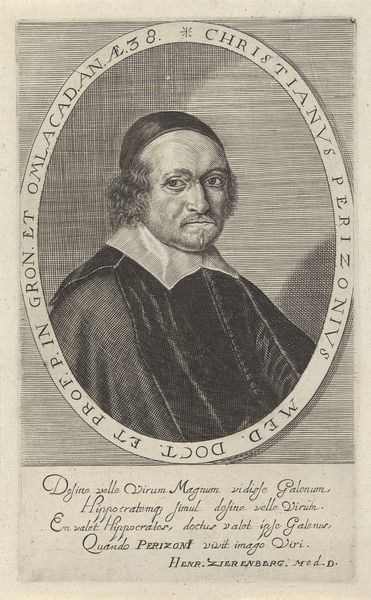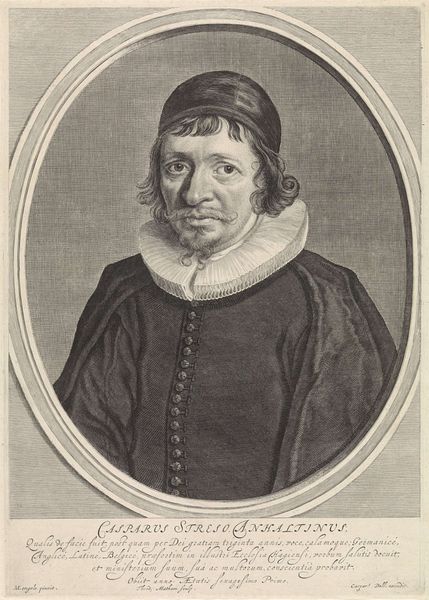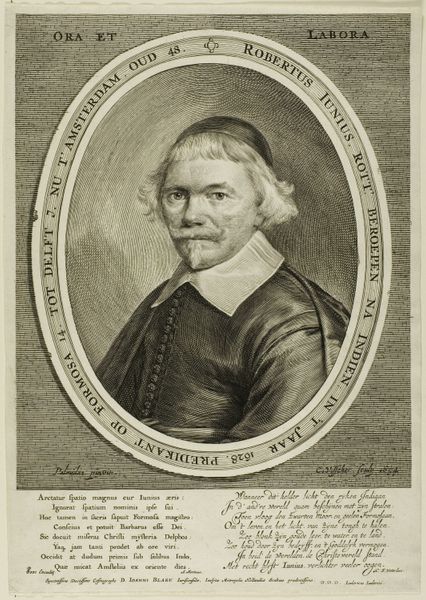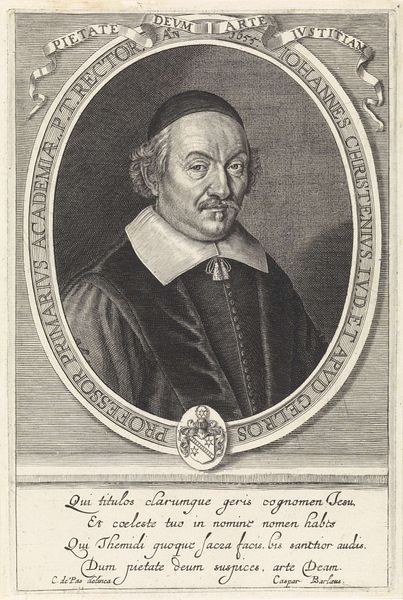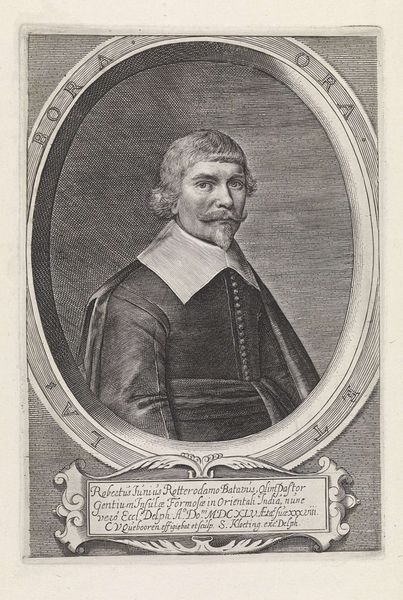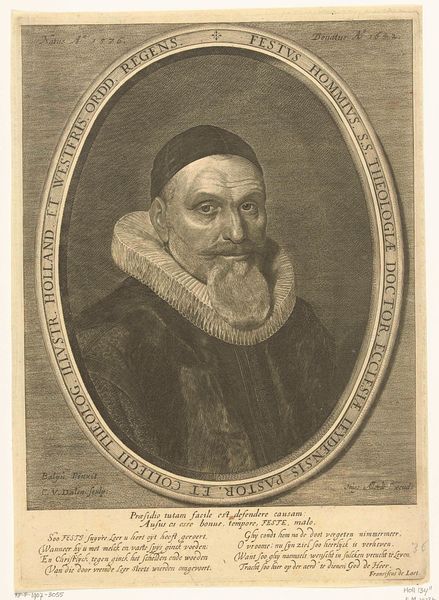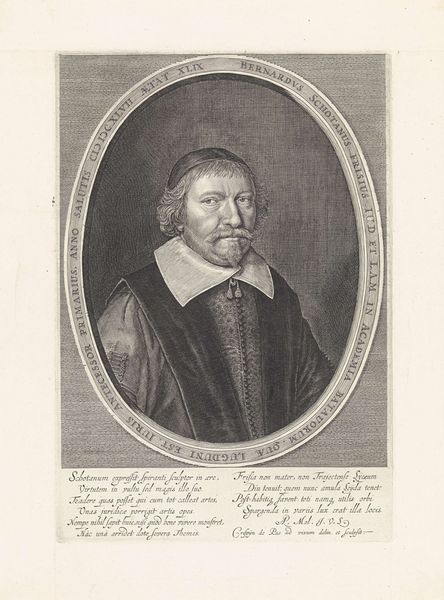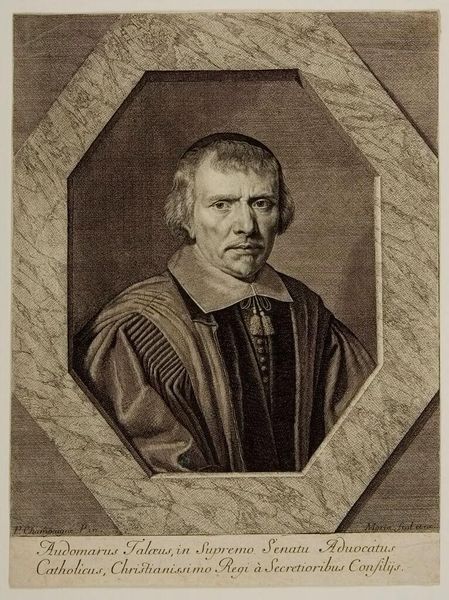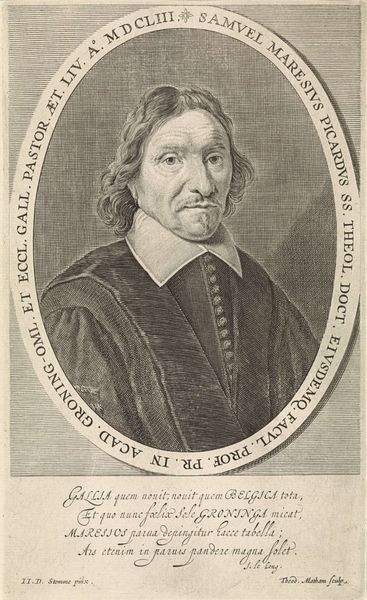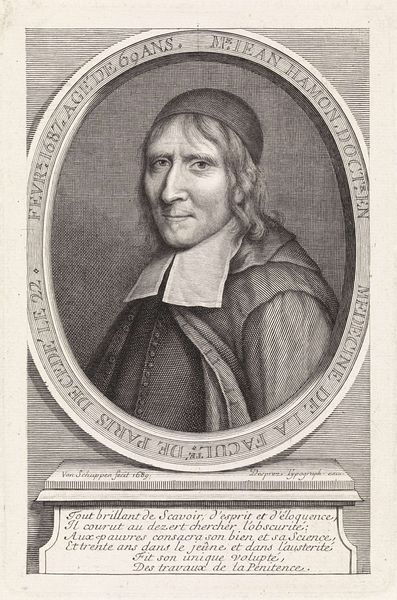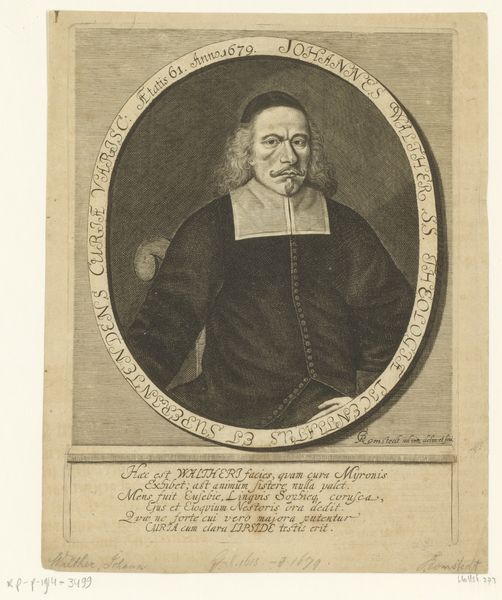
engraving
#
portrait
#
baroque
#
dutch-golden-age
#
old engraving style
#
portrait reference
#
line
#
history-painting
#
engraving
#
realism
Dimensions: height 299 mm, width 220 mm
Copyright: Rijks Museum: Open Domain
Curator: Let's turn our attention to this striking engraving, "Portret van Petrus Lacher," dating from 1665 to 1667. Jonas Suyderhoef is credited as the artist. Editor: My initial impression is one of quiet dignity. The monochrome palette, the tight framing within the oval border—it creates an intensely focused viewing experience, almost claustrophobic. Curator: Absolutely. Suyderhoef's masterful use of line creates a remarkably lifelike texture, considering the limitations of the engraving medium. Observe the precision in rendering the facial features, especially the lines around the eyes, suggesting a man of age and experience. The details of the hat and robe further reinforce this tangible quality. Editor: And notice how the textual frame serves almost like a commemorative plaque, imbuing Petrus Lacher with societal importance beyond simply being a subject. The formal qualities underscore his position. Curator: Precisely. In its time, this portrait would have circulated within a specific social sphere, likely among Lacher's colleagues and followers, serving as both a memento and a statement of his significance. The work belongs to the Dutch Golden Age style, which valued detailed realism. Editor: Thinking about this engraving within a larger historical context, one must also consider the patronage systems in place, how Suyderhoef secured commissions like these, and what impact such works had on shaping collective memory. To whom was this man important, and what did they hope to convey? Curator: I see your point. Beyond Lacher’s status, the consistent weight given to specific facial details such as high foreheads may relate to contemporaneous theories regarding temperament, intellect, and virtue, adding levels of detail beyond the immediately perceptible physical characteristics of the subject. Editor: And I’d suggest we might also examine the production context of prints like these in this moment of increased communication via print—how were such portraits utilized to propagate cultural norms? Curator: An important facet. By focusing on Lacher's individual features and his perceived character, Suyderhoef successfully creates a work that resonates with a sense of dignified, introspective power, reflecting both the sitter and perhaps aspects of Dutch society's idealized self-image. Editor: Indeed, our dialogue allows the viewer an opportunity to interpret and find layers of meanings in this portraiture beyond simple representation. Curator: Agreed. A truly enlightening investigation.
Comments
No comments
Be the first to comment and join the conversation on the ultimate creative platform.

